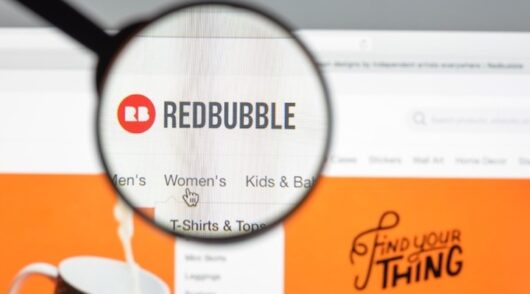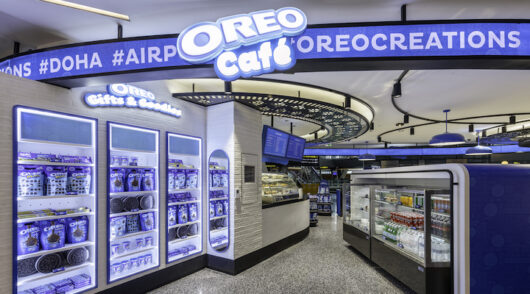 Australian retailers are less optimistic about their Christmas fare this year, with seventy per cent expecting sales in 2017 to exceed those in 2016, according to the 2017 Deloitte Retailers’ Christmas Survey.
Australian retailers are less optimistic about their Christmas fare this year, with seventy per cent expecting sales in 2017 to exceed those in 2016, according to the 2017 Deloitte Retailers’ Christmas Survey.
That’s down from 76 per cent last year and strikingly only 42 per cent expect growth over 2 per cent compared to 54 per cent in 2016.
According to the services firm, despite, or perhaps because of the nervousness around sales, retailers are holding steady on margins with 42 per cent expecting consistent margins to last year (39 per cent) while 15 per cent anticipate decreased margins, compared to 13 per cent.
Around 43 per cent expect to see an increase in margins compared to 48 per cent in 2016.
David White, national leader of Deloitte’s Retail, Wholesale & Distribution Group, said despite the relatively stable economic environment and consumer spending throughout the year, the competition for share of wallet has been intense.
“A number of retailers haven’t survived the year and there is a concern amongst respondents that weakness may continue throughout Christmas 2017,” he said.
“With so many new and expanding competitors in the market combined with price deflation and rising electricity costs, it will be a challenge for retailers in the apparel, footwear and department store sectors to maintain margins over Christmas in the face of these headwinds. Food and grocery may find the going easier with price inflation providing a boost to margins.”
So…when will the sales start?
The increasing trends over the past few years of retailers turning to discounting earlier and earlier in December may this year be reversed, with Deloitte’s report finding the percentage of retailers committed to no discounting (21 per cent) has increased back to 2015 levels. For those that will discount, post-Christmas sales look to be back in vogue with another 21 per cent planning to use this period to clear Christmas stock.
“During Christmas 2016 we saw many retailers pay the price for heavy and early discounting, with first quarter sales in 2017 proving to be a challenge for many. There seems to be a clear determination not to fall into the same trap this year,” said White.
“Traditionally, specialist retailers have taken their cues from the major department stores in hitting the discount button. With department stores rebuilding after a number of difficult years perhaps the hope is the trend of early and deep discounts will begin to reverse this year. Time will tell whether retailers stick to their guns.”
 Online share continues to grow
Online share continues to grow
According to Deloitte, the online share of sales has consistently increased in every survey since 2012, and 2017 is no different. The number of retailers expecting online sales above 6 per cent has increased from 36 per cent to 52 per cent, with 31 per cent of those respondents (versus 14 per cent in 2016) believing their online sales will be more than 10 per cent of their total sales for the period.
“There is an ever increasing sales proportion made up of online,” said White.
“The relationship between bricks-and-mortar operators and online is an ever strengthening one as the value of an effective digital strategy continues to bear fruit for traditional retailers. Retailers are getting it; over 80 per cent of respondents consider an effective digital strategy to be critical or very important to the performance of their businesses.
“We see the market waking up to the digital tipping point, where digital becomes not just a complementary sales channel, but the core of the experience. Retailers are embracing true omnichannel, with the reinvention of the store experience, consolidation of store networks and shifting of large portions of sales onto digital storefronts.”
More than a river
As Amazon prepares to officially launch in Australia, there is both hope and trepidation for what the impact may be, with Deloitte finding 17 per cent of survey respondents citing Amazon as their biggest source of new competition.
But it’s not all doom and gloom – despite 33 per cent of respondents believing Amazon will have a negative impact on their business, 39 per cent believe Amazon will be positive for them.
“With the greater channels to market created by Amazon, together with opportunities for retailers to work with them, there are undoubtedly a number of retailers who will stand to benefit from the global retail giant’s arrival,” said White.
“Amazon presents both a challenge and an opportunity for local operators. Overseas, its domination of online retail has forced many retailers to adapt and find innovative ways to connect and build two-way communication with customers. The Australian market is not isolated; retailers have been quietly innovating as the competition heats up locally.”
Despite the cautious expectations for retailers this Christmas, they remain optimistic about their growth prospects in 2018. Some 51 per cent expect to grow their earnings by more than 5 per cent next year which, while down from 60 per cent in last year’s survey, remains a lofty aspiration. With the total retail market forecast to grow at 3.6 per cent next year, White said the fight for market share looks set to be fiercer than ever.
“The process for some may be painful, and we expect to see further consolidation throughout the year, but for those retailers that get the model right there is a big prize in store.”
True to form, retailers expect new stores will again be the driving force behind sales growth in the next 12 months (43 per cent), followed by new products (24 per cent) and online offerings (15 per cent). By contrast and consistent with expectations of price inflation in 2018, just 3 per cent of retailers are expecting price increases to drive sales growth.
“The recent increase in the Australian dollar will flow through into price deflation if levels remain elevated, requiring volume growth and new stores to drive sales,” said White.
Overseas expansion has not been a major focus of local retailers over the past few years, and again this year 58 per cent of retailers do not consider a foray overseas as an opportunity next year.
“It is important not to forget the longer term opportunities establishing a beachhead overseas can provide. The Australian market is competitive and largely saturated, and local brands will need to look offshore in order to continue growing and building global brand recognition,” added White.





